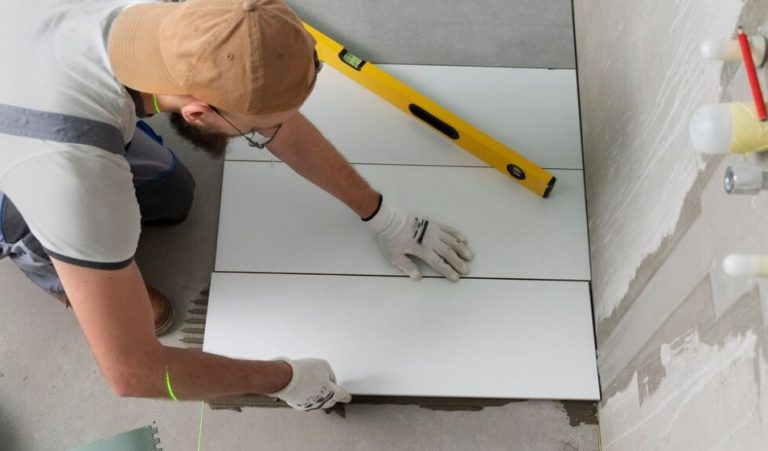The bathroom has subtly changed over the past few years from being a purely practical area of the house to becoming a very intimate place that is equal parts retreat and practical center. In the midst of economic changes and the increasing popularity of design independence, do-it-yourself bathroom remodeling has become more than just a cost-cutting strategy; it’s a creative endeavor where individual style and useful enhancement collide.
Like putting together a wardrobe that expresses your individuality, remodeling your bathroom on your own involves more considerations than just price. It has to do with empowerment. Homeowners are taking back control of their space by taking on projects like painting, tiling, and fixture installation, frequently with remarkably positive outcomes. Even newcomers are finding that the road to spa-like tranquility is surprisingly manageable with the correct preparation and resources.
Why More Homeowners Are Taking Up the Caulk Gun Instead of Hiring a Contractor
DIY remodeling is becoming a more and more alluring choice for homeowners trying to save money without compromising style in light of growing renovation expenses. Instead of employing a whole team of experts, many are opting for a hybrid strategy, outsourcing technical tasks like plumbing or electrical while doing the aesthetic work themselves.
This approach is not only very effective, but also emotionally fulfilling. It’s like “cooking your favorite restaurant meal at home and realizing you actually prefer your version,” according to one homeowner I spoke with. You can create a space that precisely matches your vision by taking control of every step of the process, from choosing the tiles to choosing the paint color.
DIY Bathroom Remodel Project Overview – Ready for WordPress Embedding
| Category | Details |
|---|---|
| Ideal For | Budget-conscious homeowners, design enthusiasts, DIY beginners |
| Average DIY Cost Range | $2,000–$6,000 (versus $10,000–$20,000 for full-service remodel) |
| Top DIY Tasks | Painting, installing new vanities, replacing tiles, shelving, lighting swaps |
| When to Hire a Pro | Plumbing reroutes, electrical work, structural changes, waterproofing |
| Skill Level Required | Basic to intermediate (depending on task) |
| Essential Tools | Chalk line, power drill, caulk gun, spackle knife, level, pry bar, safety gear |
| Estimated Timeframe | 3–6 weeks for a full remodel (shorter for cosmetic upgrades) |
| Common Mistakes to Avoid | Underestimating prep time, skipping safety checks, ignoring code compliance |
| Unexpected Benefits | Boosted confidence, customized design, and notable long-term cost savings |
Knowledge is now more accessible than ever thanks to Reddit forums, YouTube tutorials, and specialized blogs. In addition to being a necessity, DIY culture flourished during the pandemic as a means of empowerment. Furthermore, that momentum hasn’t decreased.
From Demolition to Installation, Preparation Is Key
A thorough blueprint is your best friend before hammer meets tile. Determine what is feasible given your skill level first. Replacing light fixtures or painting walls? Do it. Replacing a bathtub or relocating plumbing lines? Better left to the experts, probably.
Demolition, fixture installation, flooring, drywall, paint, and accents are the steps you should take in order to minimize disruption and maximize progress. Consider it akin to choreographing a dance: each task, tool, and schedule needs to work in unison.
When preparing, take your time. Take pre-pictures. Take two measurements. Keep your fixtures, vents, and floors safe. Despite its apparent tediousness, this attention to detail is what makes a remodel go smoothly or cause stress.
Material Selection: Form and Function Come Together
Although imported Italian tiles and marble countertops might appeal to your inner designer, they aren’t always the most sensible option for a do-it-yourselfer. Instead, choose inexpensive and simple-to-work-with materials, such as peel-and-stick backsplashes, pre-assembled vanities, and ceramic tiles.
For instance, vinyl plank flooring is not only remarkably durable and water-resistant, but it also offers a wide range of design possibilities. Paints with satin or semi-gloss finishes are perfect for high-humidity environments because they are easier to clean and resist mildew.
These do-it-yourself materials have advanced over the last ten years, providing professional-quality finishes without the daunting installation process.
Surprising Teachings Along the Way
Do-it-yourself remodeling is more than just grout and nails. It involves perseverance, problem-solving, and changing course when something unavoidably goes wrong. Every mistake is a chance to improve, whether it’s realizing you cut the tile incorrectly or learning your bathroom walls aren’t square.
A family from Raleigh, North Carolina, described how they spent six weekends making their small, dark bathroom into a bright, spacious retreat, complete with double sink vanity and custom shelving. They smiled and remarked, “It was chaotic, but the sense of pride afterward was unmatched.”
The Great Benefit: Worth That Outweighs Vanity
DIY remodeling is set to gain even more traction in the upcoming years as sustainability becomes increasingly integrated into design. Reusing cabinets, finding reclaimed tiles, or just opting to repair rather than replace are examples of decisions made by do-it-yourselfers that are both economical and environmentally responsible.
The value of homes also increases. According to home appraisers, well-executed bathroom improvements can result in a return on investment of as much as 60%. For a project you can complete in a few weekends with a focused attitude, that’s no small accomplishment.
Really, you’ve got this.
You don’t need years of experience or a contractor’s license to remodel your bathroom. It calls for careful preparation, reasonable expectations, and an openness to learning. Not only are you creating a better bathroom, but you are also increasing your capacity with every tile set and screw turned.
So go ahead and roll up your sleeves, sample that paint, and sketch that layout. Because sometimes the best partner you’ll ever have for renovations is right in front of you.


